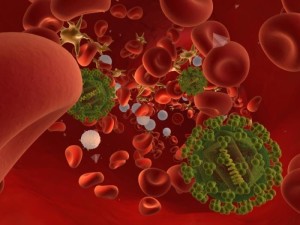Syndrome is a set of medical signs and symptoms that are correlated with each other and often with a specific disease. HIV- the cause the disease AIDS alters the immune system, making people much more vulnerable to infections and diseases. This susceptibility worsens as the syndrome progresses.
HIV is found in the body fluids of an infected person (semen and vaginal fluids, blood and breast milk). The virus is passed from one person to another through blood transfusion, contaminated hypodermic needles and sexual contact. In addition, infected pregnant women can pass HIV to their babies during pregnancy, while delivering the baby and through breast feeding.
Symptoms of early HIV infection
Many people with HIV have no symptoms for several years. Others may develop symptoms similar to flu, usually two to six weeks after the HIV virus enters into the body. The possible symptoms are: fever, chills, joint pain, muscle ache, sore throat, sweat (particularly at night), enlarged glands, red rash, tiredness, weakness, weight loss etc.
HIV Prevention
To prevent being infected with HIV, healthcare professionals advice precautions related to:
Unprotected sex: Having sex without a condom can put a person at risk of being infected with HIV and other sexually transmitted infections (STIs). HIV can spread by having unprotected sex (vaginal, oral and anal sex). It can also get transmitted by sharing sex toys with someone infected with HIV.
Drug abuse and needle sharing: Intravenous drug use is an important factor in HIV transmission in developed countries. Sharing needles can expose users to HIV and other viruses, such as Hepatitis-C. Strategies such as Needle-exchange programs are used to get awareness and reduce the infections caused by drug abuse.
Body fluid exposure: Exposure to HIV can be controlled by employing precautions to reduce the risk of exposure to contaminated blood. Always, health care workers should use barriers (gloves, masks, protective eyewear, shields, and gowns). Thorough washing of the skin immediately after getting into contact with the contaminated blood or other body fluids, can reduce the chance of infection.
Pregnancy: Anti-HIV medicines can harm the unborn child. But an effective treatment plan can prevent HIV transmission from mother to baby. Precautions have to be taken to prevent the baby from HIV. Delivery through caesarean may be requisite in some cases. Breastfeeding must be replaced with bottle-feeding, if the mother is infected.
It can take up to 9 years after being infected with HIV before AIDS symptoms appear. There is no cure for AIDS. However, there are new treatments that can slow down the progression of the disease and improve the patient’s quality of life.

